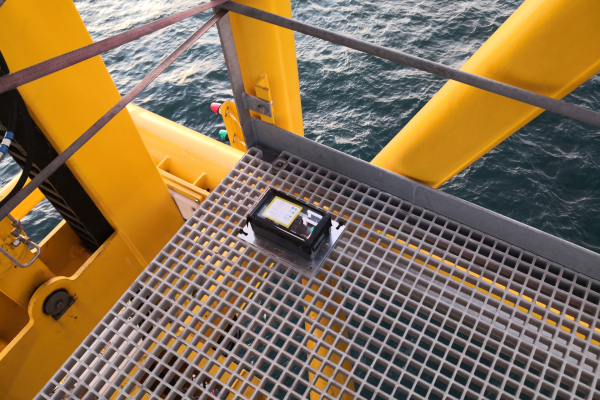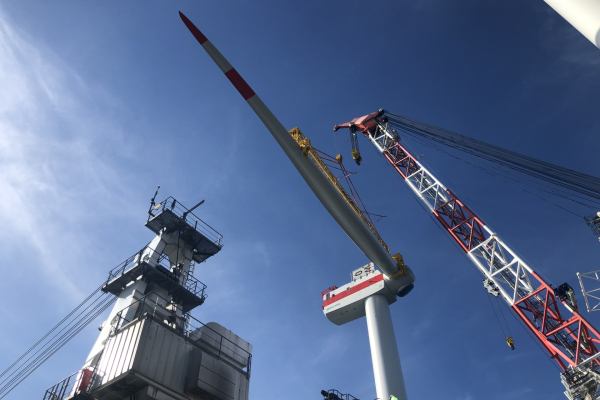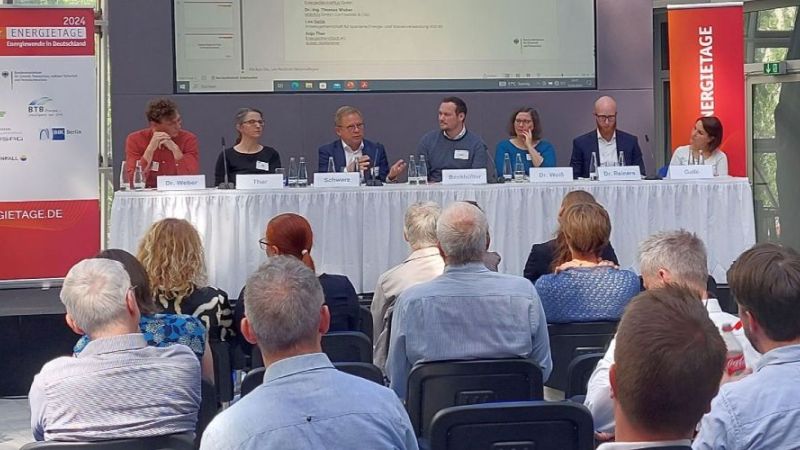 © Sebastian Czerwon / Aljoscha Sander
© Sebastian Czerwon / Aljoscha Sander
Wind energy
Start-up flucto serves niche in offshore installations
The movements of wind and waves are challenging when it comes to installing huge offshore wind turbines. Knowing the right time windows to attach the gigantic rotor blades to the nacelle therefore saves considerable costs. This is where flucto comes in.
This summer, the young entrepreneurs Aljoscha Sander and Andreas Haselsteiner were in Taiwan for their first clients. There, they used the construction of an offshore wind farm for practical tests on the contract they won - the client: a German medium-sized mechanical engineering company. Along with them they had their product, a small robust measurement system. The waterproof box reliably collects data on the ambient conditions - weather, waves and all movements of the turbine. “The core objective of our spin-off is to provide a system that can measure and analyse this very complex undertaking of an offshore wind farm installation live”, Sander reports. This would offer an up-to-date digital status view of the ongoing installation. In practice, this was still a long way off: Until now, this work was done by people who passed on the information by radio and then entered the data into tables.
System quantifies experience values and helps with parking
The measurement system sold by flucto has two competencies: On the one hand, it is supposed to monitor operations and warn before accidents occur. Sander: “This then works like a kind of parking assistant.” On the other hand, the system should help to quantify empirical values. What exactly happens to the tower, for example, when the waves come from the southeast and the wind has a certain force. These data would have to be collected from scratch for each park and used for the very specific installation in each case - the differences between the various locations and approaches are too great. However, this would allow wind farm builders to plan better and save precious time: One day of installation at sea costs around 300,000 euros - whether the work is progressing or halting.
Picture gallery: The measuring system then and now
Data and measurement system used as open source by universities
Flucto has its origins at the University of Bremen. Within the SKILLS research project, the need arose for a robust measurement system that did not exist on the market in this form. Sander and Haselsteiner therefore developed a system from basic sensors, watertight boxes and lead acid batteries, which was successfully used offshore at SKILLS. Ultimately, this resulted in a large-scale measurement campaign whose data is freely available to the research community. The measurement system itself is also still being used by universities - as open source. It is for instance being used in the current REFINE research project to analyse the vibrations of the towers of Nordex onshore wind turbines.
The start-up flucto, however, continues to focus on the offshore business. The spin-off took place in November 2020. Since then, the two scientists have continued to develop their hardware. "This is a simple, small, shoebox-sized measuring box with magnetic feet that you can position in the wind turbines extremely quickly and easily", says Sander, describing the design. The display is comparable with that of an e-book reader to save power. The box has a battery life of one week, has a waterproof power connection and weighs 1.5 kilograms. For companies, the acquisition could be worthwhile in any case, says Sander: "Offshore plants are getting bigger and bigger with every generation. And they are also coming to more difficult locations, with rougher sea state and fewer suitable weather windows. That’s why the installations are simply becoming more and more the absolute bottleneck for the offshore industry." (mb)
















